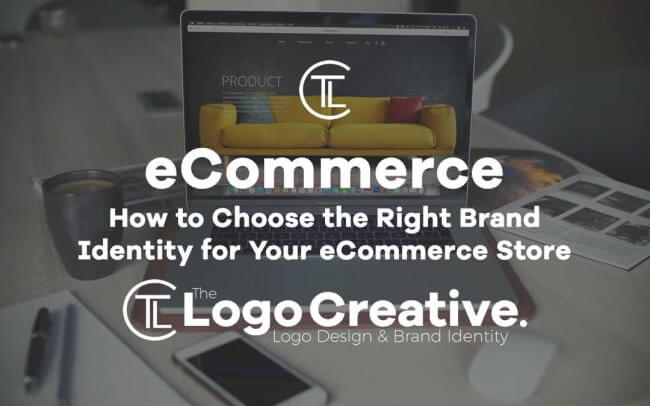eCommerce is a rapidly growing sector. Every year it carves out a larger share of the retail market than the last. Generally speaking, this is a good thing. It’s helping develop an entirely new sector of the economy that makes it easier for people to enjoy the freedom and flexibility of working online.
Yet the downside of all this activity is that competition is ramping up. Consumers are constantly bombarded with marketing and advertising, so it’s becoming increasingly difficult to stand out.
Strong branding can help you cut through the noise and be heard. This means developing good, consistent messaging that resonates with your target audience. And it also means creating great content.
But branding is one of the few places where what you say is actually just as important as how you say it. Off-message content will underperform no matter how good it is. But a great message will also disappear in mediocre content. To decide brand identity, you must decide what to say, how you’ll say it and who you’ll say it to.
Consider these tips to help you choose a brand identity that’s right for your company.
Table of Contents
Choose Your Target
The first step is to choose the “who.” Anything else you do needs to be with your target audience in mind. If what you communicate doesn’t resonate with them, people will tune you out. So before going too far in determining brand identity, you must learn as much as possible about your audience.
The best thing you could do would be to conduct surveys and focus groups. You would want to ask questions about what your target audience looks for in a brand, how they interact with companies, what they value, how they live their lives, etc. The goal is to identify pain points and then to figure out ways of communicating to them how you can alleviate this pain.
However, this type of market research, although very valuable, can also be very expensive. Something you can do instead or alongside surveys and focus groups is to map out your Ideal Customer.
This activity has you create a fictitious person based on the type of people you are targeting. You go in-depth with your analysis, brainstorming what this person might be like. In many ways, you’re asking similar questions on a survey but reasoning how people might answer for yourself. Make sure to do this in a group so that you can bounce ideas off each other and more accurately describe this audience member.
Once you have a better idea of who it is you’re trying to reach, you can begin to dive into what you’d like to say.
Choose Your Message
Nowadays, people want to connect to companies that have a purpose. Winning loyalty with prices won’t last. Increased competition will continually drop prices, making it impossible to keep up forever. There will always be someone who can do it for less. So, you need to find something consumers can latch onto, and also something that will attract them.
The message you choose to send is this something.
You need to get it right so that it will resonate with your target audience. To determine your message, you need to consider three things: your brand vision, brand values , and brand personality. Here’s a little more about each one to help you make your decision.
Vision
To be successful as a brand, you need to have a strong vision. You’re asking people to follow you, so it’s important you be able to lead. And leaders need vision.
Good businesses solve problems. Your vision needs to somehow be related to a world where this problem has been solved. And you need to have a good understanding of pain people feel because of this problem, and how this radiates out into their lives. In other words, you have to communicate a vision of a world your target audience would want to live in.
So whether you’re a skin care products store committed to creating a world without dry skin, or a coffee supplier who wants to bring the world together for a cup of Joe, you need to be clear about what you are working to achieve by offering your product to the world.
Values
One of the ways you’ll demonstratea commitment to your vision is values. Let’s play out an example of what you would do if you ran an eCommerce store for camping and hiking apparel.
Your vision might be:
To create a world where people live in better harmony with nature
So, what could be some of your values?
- Environmental conservation
- Sustainability
- Environmental justice
So, as you go through your branding strategy, you need to create messages that are focused around these values, helping you communicate your vision. When you do this, you help convey your purpose to audience members. This makes you different. And it also increases your chances of resonating with people and recruiting them to be loyal customers.
Personality
Lastly, you need to decide on a brand personality. This is a little different than vision and values. It represents more of the how. Are you funny? Academic? Tragic? Easy going? Some combination? Just like we as people have distinct personalities, so does your brand. You want your target audience to feel like they are dealing with real people when they do business with you.
This humanization of the company is essential. It will help people connect with you and it increases your chances of them becoming loyal to your brand.
Choose Your Image
Visuals are a powerful way to communicate your message to your target audience. They say a picture is worth 1,000 words. But even so, to effectively communicate brand identity, you need to back up these visuals with what you do and say.
That being said, you need to recognize that each visual interaction you have with someone has a powerful effect over how they view your brand. It’s critical each and everything they see from you is in support of the message and image you are trying to create and communicate.
Colors
This starts with simple things that are actually far from simple. You’ll need to choose brand colors that help reinforce the associations people make to your company. Think about what colors mean: red is associated with power and emotion; green and blue are associated with the earth; and orange and yellow are considered upbeat and are connected to the sun, to name a few. These are not set rules, but do keep them in mind as you decide the colors for your brand.
Web Design
Website design is also important here. Make sure to choose a theme or design that reflects what you want to say about yourself. It may be best to work with a professional on this one. Making the types of changes to web design that reflect brand identity often require complicated coding. And professionals can help you find a concept that works for the message you’re trying to communicate.
Images
Furthermore, you need to strictly vet the images you use in all content, such as videos, blog posts, Instagram posts, etc. Think long and hard about what that image is saying about you, and make sure it properly reflects the messages you want to communicate.
Choose Your Name
At some point, while you’re figuring all this out, you also need to come up with a name for your company. Eventually, if you’re successful at communicating to the right people with the right message, your brand will become synonymous with your name. But to get to that point, you can use your name to help reinforce your branding efforts.
The important thing to remember when choosing a name is to not overthink things. It’s impossible to come up with a name that 100 percent communicates your brand identity. But it does communicate something to people. Figure out what you think you can most emphatically say about yourself in one or two words when choosing a name.
And you also want to pick something that will stick. People hear hundreds if not thousands of different brand names each week. You need to come up with something that is easy to remember and that is also closely related to the other aspects of your brand identity. But ultimately, it’s the messages you send alongside the name that will help build up people’s understanding of your identity.
Choose Something You Can Stick To
One of the most common branding mistakes people make is a lack of consistency. To make sure the message you are trying to convey stick in people’s mind, they need to develop some expectations of you. You need to give them a reason to come to you, and you must make sure you are serving this purpose at every touchpoint.
So, when you’re choosing your vision, values, and personality, pick things that will resonate with your target audience. But also pick things that matter to you. If you’re able to put your own interests and passions into the brand, its authenticity will shine much brighter.
By focusing on these series of decisions, you’ll be much better prepared to choose a brand identity that will help your company gain loyal and engaged customers.
 Author Bio
Author Bio
Raj is the founder of JavaPresse, a specialty coffee service, and eCommerce store. After many years of researching his audience and making many mistakes, Raj has learned a lot about building brand identity and affinity. He sees this as a critical component of any small business’ success. So, to help others and share his story, he writes frequently about his experiences and lessons learned. You can follow Raj on Twitter here.

